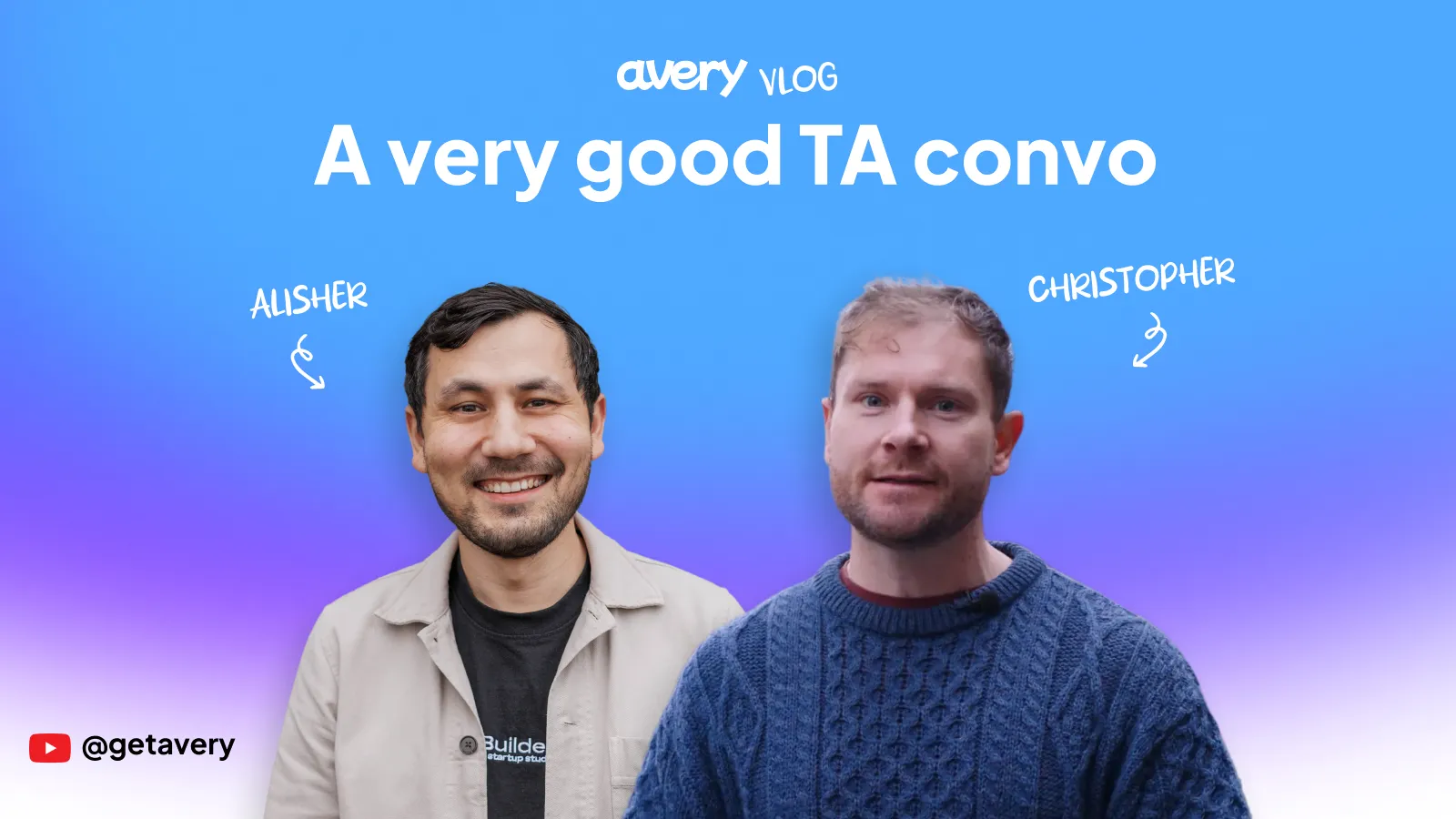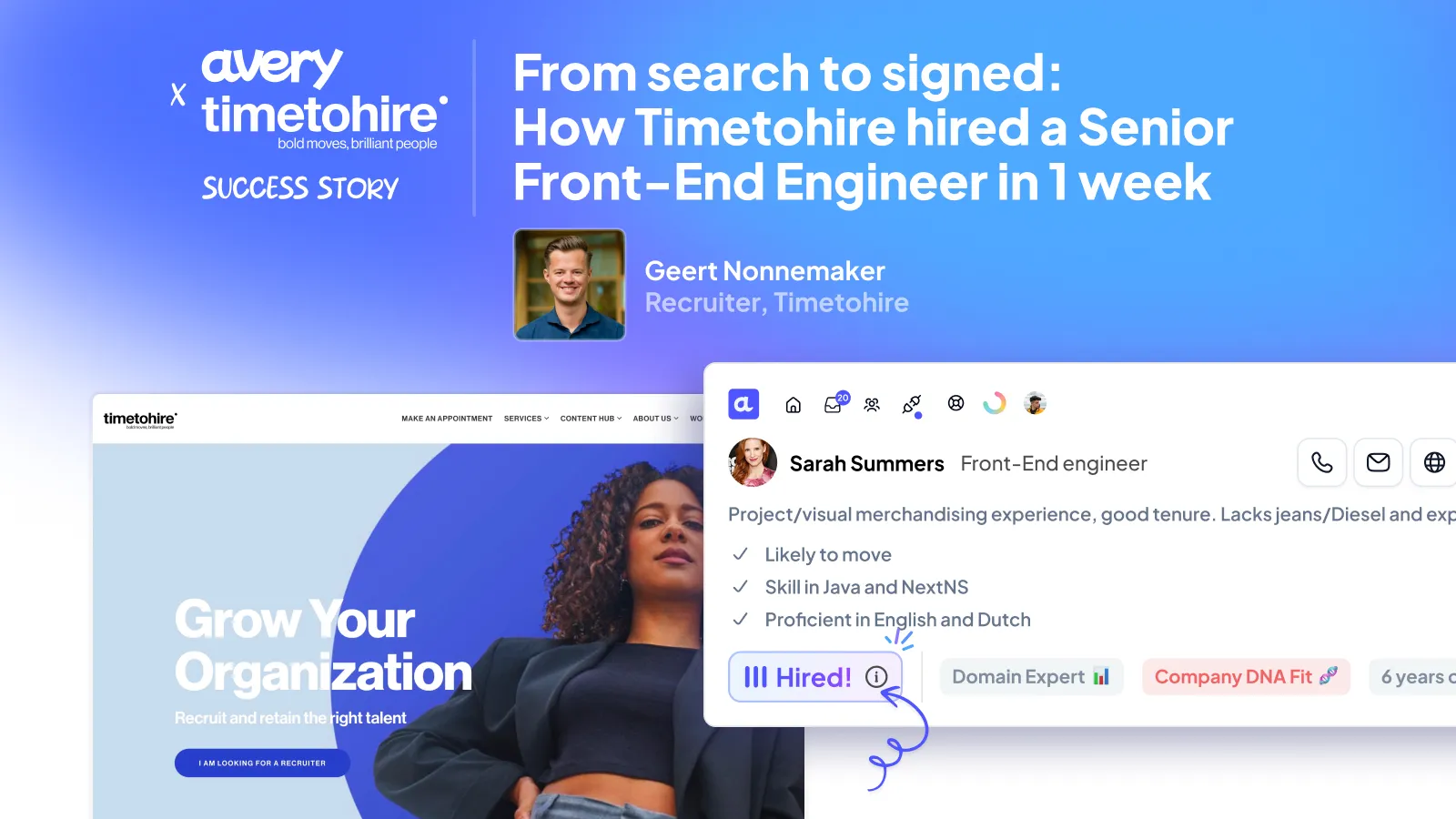Beyond speed: how to build hiring velocity that actually works
Article created in collaboration with Donja Huidar, Founder of GingerMoon

Most companies think they have a hiring speed problem when they actually have a bandwidth problem.
True hiring velocity isn't about moving faster, it's about removing friction and embedding smart checkpoints that let you move fast AND smart. Companies that master this approach are seeing 80% reductions in admin time, 30+ percentage point improvements in conversion rates, and the competitive edge needed to win top talent in 10-day cycles while others struggle with 30-day processes.
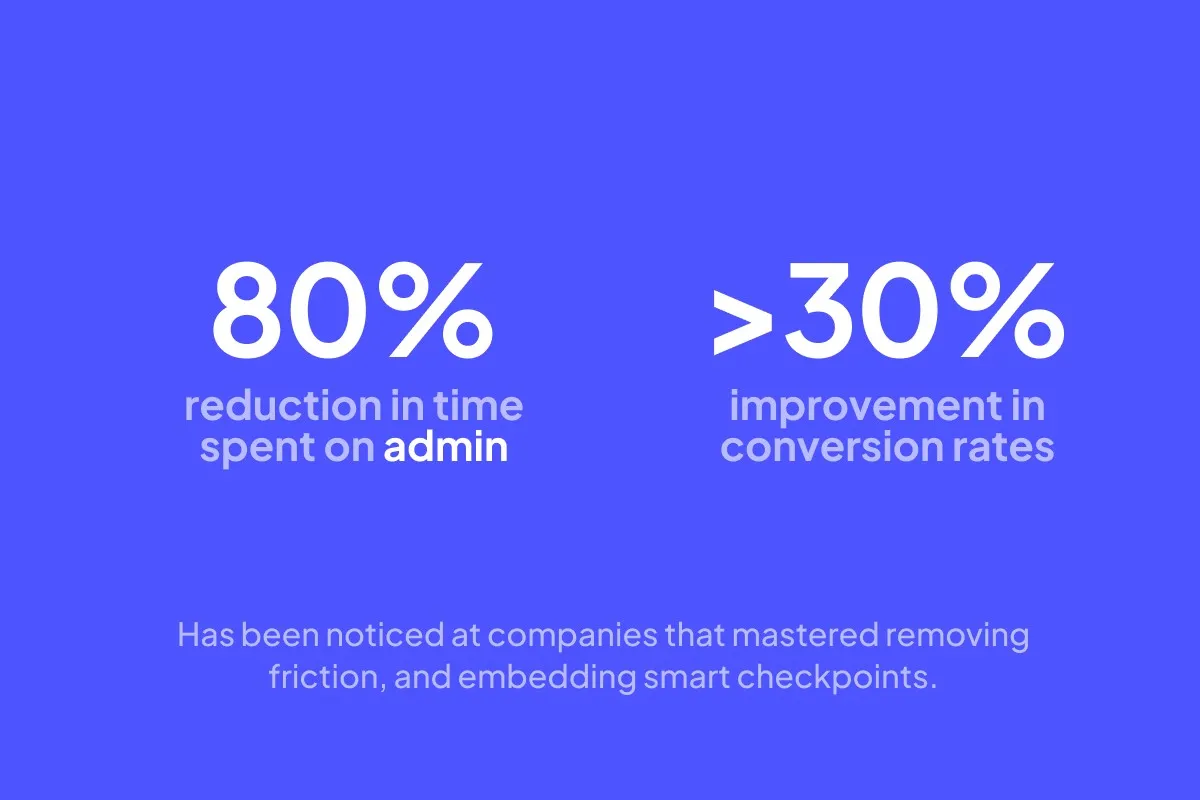
The hiring velocity conversation has been hijacked by a dangerous myth: that speed and quality are opposing forces. While organizations chase arbitrary time-to-fill targets, they're missing the fundamental truth about what hiring velocity really means—and why it's become a business survival metric.
"For me, hiring velocity isn't just a speed metric—it's a reflection of a company's ability to execute," explains Donja Huidar, a TA Strategist with 15+ years in global recruitment. "But there's a catch: speed without clarity kills quality."
Huidar's insight cuts to the heart of why so many velocity initiatives fail. The traditional hiring velocity equation — comparing positions opened versus positions filled — provides useful directional data, but it doesn't address the underlying execution capabilities that determine whether an organization can consistently deliver results under pressure.
"Fast hiring doesn't happen in chaos. It happens when friction is removed for both the candidate and the business," Huidar emphasizes. This principle challenges the common assumption that acceleration requires shortcuts or compromised standards.
The real velocity killers: friction and misalignment
While most organizations focus on optimizing their processes, Huidar identifies the true velocity destroyers that exist before the process even begins. "I've worked with companies where it took 20 minutes just to apply for a job—clunky sites, endless forms, and zero engagement. That's where talent drops off."
This candidate experience reality directly impacts the hiring velocity equation. Research shows that organizations should target 15-20% source-to-apply conversion rates, but many companies unknowingly sabotage their own metrics with poor application experiences. When quality candidates abandon applications due to friction, the entire velocity calculation becomes meaningless.
The internal factors prove equally damaging.
"Internally, it's lack of strategy, unclear headcount, and misaligned hiring managers," Huidar notes. These alignment issues explain why some organizations struggle to achieve positive hiring velocity despite significant recruitment investments.
The solution requires addressing both sides simultaneously. "The real velocity comes when tech, process, and people align: a clear intake, AI-backed workflows, and a recruiter who knows how to move with purpose."
Measuring what actually matters
The standard hiring velocity formulas — whether basic hires-per-period or time-based calculations — miss critical insights about process health and sustainability. Huidar advocates for a comprehensive measurement approach that reveals the true drivers of velocity success.
"Most companies don't even measure properly. You need full funnel metrics: source-to-apply conversion (aim for 15–20%), application-to-phone-screen (target 25–30%), and offer-to-acceptance rates (85%+)," she explains.
These conversion benchmarks provide actionable insights that simple velocity calculations miss. Industry data supports this approach, with construction averaging 12.7 days to fill roles while health services require 49 days—but these timelines become meaningless without understanding the underlying conversion health. "But the real insight comes from velocity metrics like average days-in-stage and bottleneck identification," Huidar adds. This diagnostic approach enables targeted improvements rather than broad process overhauls.
The measurement framework extends beyond speed to validate hiring effectiveness. "I also track if hiring goals were met and, more importantly, measure 90-day new hire performance scores and retention to validate we're not just hiring fast, but hiring right."
This quality validation addresses a critical concern in velocity optimization: ensuring that accelerated processes don't compromise long-term hiring outcomes.
The smart checkpoint system
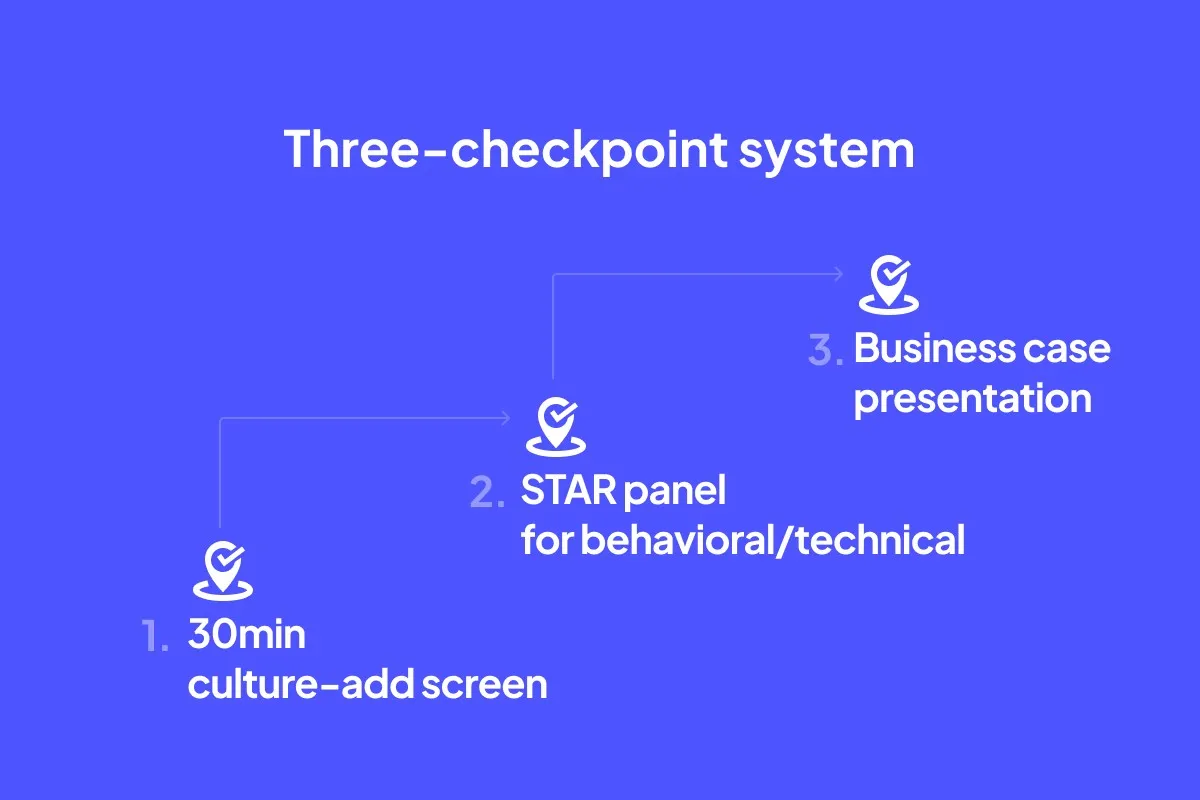
One of Huidar's most counterintuitive insights concerns how to maintain standards within accelerated timelines. Rather than viewing quality controls as velocity inhibitors, she designs checkpoints that enable confident acceleration.
"I remember one case — a high-stakes tech hire tied to a massive deal. Leadership wanted it closed in 10 days. The CV was perfect, and the interview feedback was positive. But something felt off," she recalls.
Instead of proceeding with the obvious choice, Huidar implemented an additional validation step. "We ran a custom 90-minute session: technical design meets behavioral realism. That's where the gap showed up."
The decision to slow down ultimately accelerated long-term success. "We adjusted our course and hired someone else, who, by the way, is still outperforming expectations 18 months later. Speed matters. But you don't compromise standards. You embed checkpoints that let you move fast and smart."
This approach reflects the strategic balance between speed and quality that modern organizations must achieve. Rather than compromising evaluation rigor, effective velocity requires smarter assessment design.
Huidar's systematic checkpoint framework demonstrates this principle in action: "I use a three-checkpoint system:
- First, a 30-minute culture-add phone screen focused on values alignment and role clarity.
- Second, a structured panel using the STAR method for behavioral questions and technical competency validation.
- Third, a business case presentation addressing a real company challenge."
Each checkpoint serves dual purposes — validation and candidate insight. "This tests problem-solving, communication, and strategic thinking under pressure while giving candidates insight into actual work."
The scoring framework ensures consistency and objectivity:
"Each checkpoint has clear scoring criteria: culture-add (1–4 scale), technical competency (go/no-go), and business acumen (specific rubric). We don't advance candidates who don't meet minimum thresholds, regardless of timeline pressure."
Technology that actually moves the needle
The technology landscape for hiring velocity is cluttered with point solutions that promise transformation but deliver fragmentation. Huidar's experience reveals why many technology investments fail to improve actual outcomes.
"Fragmented tools don't move the needle for candidates either. Only when I implemented an end-to-end AI-backed process — from one-click applications to automated scheduling to real-time status updates — did velocity improve without sacrificing quality or candidate experience."
This integrated approach addresses the candidate experience factors that impact conversion rates throughout the hiring funnel. Research shows that 69% of employees are more likely to stay with companies that provide excellent onboarding experiences, but Huidar extends this logic to the entire recruitment process.
"Candidates should never wonder where they stand or wait for basic updates," she emphasizes. This communication consistency supports both velocity and quality by keeping top candidates engaged throughout evaluation periods.
The AI integration delivers measurable impact when properly implemented. "AI-powered resume screening reduces initial review time by 80%, predictive analytics help prioritize which candidates to pursue first, and automated reference checking accelerates final validations."
However, Huidar cautions against viewing technology as a complete solution.
"The key is using AI to augment human judgment, not replace it. Done right, they shift recruitment from reactive to predictive and free recruiters for relationship-building and strategic consultation."
Systematic bottleneck elimination
Huidar's diagnostic approach to velocity improvement begins with understanding where time actually gets consumed. Her assessment of common bottlenecks reveals why many optimization efforts fail to deliver sustainable results.
"Legacy systems are the silent killers of recruitment velocity. SAP, Workday — they're built for record-keeping, not recruiting. Add unclear leadership, no headcount clarity, or job descriptions changing mid-process, and you're left firefighting."
This systems perspective explains why point solution improvements often fail to impact overall velocity. The most sophisticated screening technologies become ineffective when embedded within dysfunctional workflows.
The solution requires starting with strategic alignment before addressing tactical efficiency. "That's when I zoom out. I start with leadership: align the top layer, assess hiring maturity using Bersin's model, then build a realistic recruiting plan."
Huidar's practical framework demonstrates systematic bottleneck elimination in action.
"One company had 30+ roles open with no intake, no governance, and no brand. I implemented the 5-7-10 rule—5 days to engage, 7 to screen, 10 to offer. Within a month, bottlenecks were visible, and velocity picked up."
This structured approach creates accountability and measurement opportunities that enable continuous improvement. "You don't fix chaos with speed. You fix it with structure."
The bandwidth vs. speed reality
Perhaps Huidar's most actionable insight concerns the true nature of most velocity challenges. Organizations investing in additional recruitment resources often miss the fundamental inefficiency that constrains their current capacity.
"If I had to pick just one action, run a time audit. Most HR leaders think they have a hiring speed problem — but what they actually have is a bandwidth problem."
The audit results consistently reveal the same pattern across organizations. "Ask your recruiters to track where their time goes for one week. You'll see 40–60% is spent on admin: scheduling, updates, chasing feedback."
This administrative burden directly impacts hiring velocity calculations by reducing the time available for high-value activities like candidate evaluation and relationship building. "That's the opportunity. Start by automating scheduling and candidate communications. Then, layer in screening support. One automation flow can free up 20 hours a week per recruiter."
The ROI implications are significant. Research shows that talent management software provides returns ranging from ~$3 to ~$12 for every dollar spent, with much of this value coming from operational efficiency gains rather than just improved hiring outcomes.
"Velocity doesn't start with hiring more recruiters but with giving them their time back," Huidar concludes.

Future-proofing velocity strategies
Huidar's market perspective reveals why hiring velocity has evolved from a recruitment KPI to a business resilience metric. The competitive landscape demands acceleration capabilities that many organizations haven't developed.
"We're heading into a market where speed isn't optional — it's survival. Through the PESTLE lens, I see three critical trends: Political shifts disrupting visa policies and remote work, economic uncertainty making top candidates risk-averse, and technological change outpacing workforce readiness."
These macro factors create competitive pressure that traditional hiring approaches cannot address. "Companies still running 30-day hiring processes? They'll lose out to those moving in 10. Hiring velocity is no longer a recruitment KPI — it's a business resilience metric."
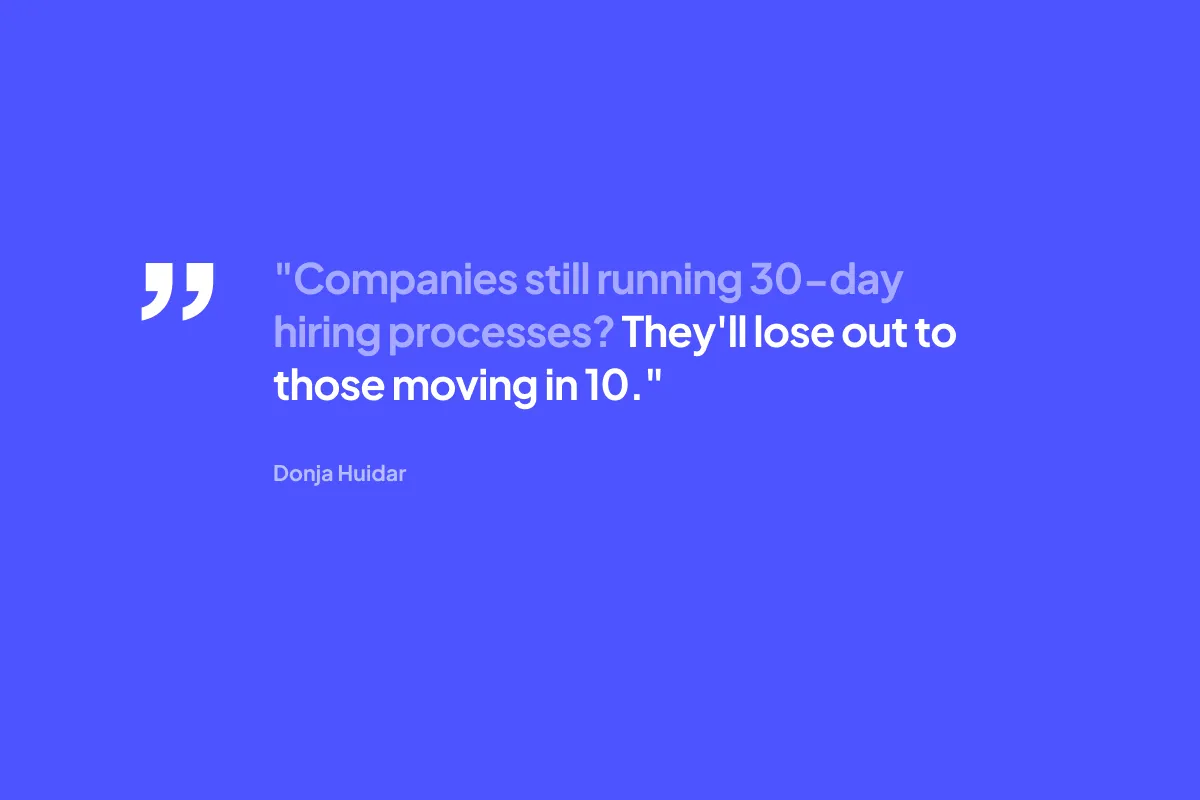
The solution requires proactive capability building rather than reactive process improvement. "Tech-enabled intake will become the new standard. With advances in AI and analytics, we'll see intelligent intake platforms that combine market data, internal benchmarks, and historical performance insights — all before the first CV is sourced."
This predictive approach addresses the alignment challenges that create velocity bottlenecks.
"This ensures hiring managers and recruiters align on role success from day one. In fast-moving markets, strategy has to start before sourcing, and tech will make that alignment faster, smarter, and scalable."
The strategic imperative
Huidar's insights reveal hiring velocity as a comprehensive organizational capability rather than a simple process optimization challenge. Success requires integrated thinking about technology, process design, stakeholder alignment, and measurement frameworks.
The organizations that master this integration gain sustainable competitive advantages in talent markets where speed and quality have become equally critical. The choice isn't between fast hiring and good hiring — it's between systematic excellence and competitive irrelevance.
As Huidar's experience demonstrates, true hiring velocity emerges when friction disappears, checkpoints enable confidence, and technology amplifies human judgment rather than replacing it. The future belongs to organizations that understand this integrated approach and invest in building comprehensive velocity capabilities before market pressure makes them essential for survival.
The shift from speed-focused to velocity-capable organizations represents the next evolution in talent acquisition strategy. Leaders who recognize this distinction and invest accordingly will build the recruitment resilience needed for long-term competitive success.

